Images
Select an image to view a larger versionPhotographs courtesy of Terry Michaels
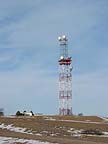
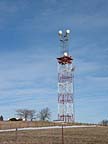
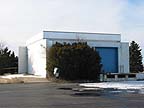
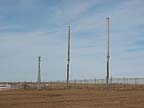
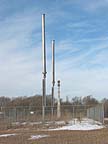
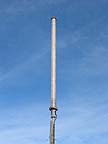
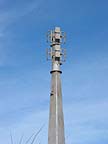
Common Language Location Identifier (CLLI): LYNSNE01
Geolocation (GL) code: NE1280
Address: off SR-51 about 2.6 mi. east of US-77, Burt County, NE
Latitude: N42-00-16 (42.00444)
Longitude: W96-24-44 (-96.41222)
Elevation: 1348 ft. (411 M)
Location: 5.8 mi. northeast of Lyons, Burt County, NE
Active AT&T Callsigns: none
Canceled AT&T Callsigns: KYN93
Thanks to Terry Michaels for his contributions to this page.
The major structures at Lyons are an underground building "hardened" against nuclear blasts, a 329 ft. (100 M) self-supporting steel-lattice tower tower holding several horn-reflector microwave antennas, several ground-mounted hardened UHF antennas, and a surface building which shelters the entrance to the underground space.
The underground building consists of two floors with high ceilings to accommodate tall racks of communications equipment and their overhead cabling, each floor having a mezzanine level. The building is of reinforced concrete construction and is covered by several feet of earth. It features blast doors closed automatically by a "seal-up system" in the event of a nuclear blast, a decontamination shower, a gas-turbine engine-alternator for emergency power, and a ventilation system designed to maintain a positive pressure of filtered air inside the building to prevent the entry of airborne fallout.
Lyons was constructed in the 1960s as a main station on an east-west L-4 transcontinental coaxial-cable route. As a main station, Lyons would have been responsible for maintenance, testing and recovery responsibilities on a portion of the cable route, and for this reason would have been staffed continuously by managers and technicians. In addition to those functions, Lyons had microwave links to Moville Junction and Mondamin and a coaxial-cable "spur line" to North Bend, and was intended to house an Electronic Switching System (ESS).
The need for reliable defense communications in the face of a possible Soviet nuclear attack was an important reason for the construction of every hardened Bell System facility, and because of its proximity to the headquarters of the Strategic Air Command at Offutt Air Force Base south of Omaha, Lyons had an especially important role in national security. This mission is evidenced by the hardened UHF radio antennas on the property. Those antennas served as a Ground Entry Point (GEP) for the UHF air-ground radio system code-named "Combat Ciders", which provided communications to the Post-Attack Command and Control System (PACCS) aircraft. Those planes, such as "Looking Glass", were flying command posts on continuous airborne alert, capable of delivering orders to launch nuclear-tipped intercontinental ballistic missiles. In addition, the UHF network was used by Air Force One when the plane was within the system's range.
AT&T published a brochure describing the station's features:
AT&T sold the Lyons station to American Tower Corporation, which offers space on the tower for lease to wireless-communications providers and other radio communications services.
American Tower has produced an online site brochure, which includes photos of the tower and the GEP antennas. |
 |
 |
 |
 |
 |
 |
Updated on February 20, 2004 at 18:48 by Albert LaFrance